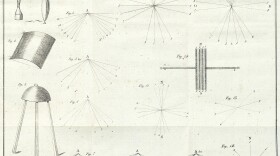I’d like to think of them as ours, but they aren’t—not really. Bison will be forever associated with our own Great Plains, but evidence of their roaming has turned up from Florida to Alaska, Maine to Mexico. They don’t “belong” only to those of us who live here.
The common North American buffalo stands as tall as six feet at the shoulder and may well be the best hooved argument for becoming a vegetarian. Burly and powerful, able to withstand extreme temperatures, the American bison forages almost exclusively on grasses and sedges. Although their short legs almost immobilize them in deep snow (unlike some cattle and most horses), standard-sized buffalo adorn themselves in dense winter coats that add bulky layers of insulation in crucial areas of their bodies.
They change shape as frequently as Oprah, dropping as much as 15 per cent body weight during winter, when they wander into a cold funk, roaming less, eating less, living off their fatty reserves. When April greens the prairies, they eat as if they haven’t for years and grow meaty once again.
For reasons known only to him, a rutting bull decided to run beside our tour bus a few years ago, like some overweight marathoner. He loped along on the side of the road for a mile without tiring. But then, a bison’s windpipe is the size of a furnace duct. Even though an average bull weighs as much as 1600 pounds, he’s a cross-country star. Native people knew they’d need an extra horse or two to run those beasts down because the American bison has been fearfully and wonderfully made.
Some say thirty, some fifty, some ninety—but no one will ever know how many millions of buffalo once roamed the Great Plains. But no more. There is lots of reasons, but one is more important than any other: the millions of buffalo were in the way. Once upon a time, they were the soul of a host of Native American tribes; but as Europeans and Yankees trucked farther and farther west, the buffalo, like those Native peoples, had to be cleared away, like river side timber and the tall-grass prairie. Sounds awful—and it was.
Once upon a time they were right here. Just down the road at Spirit Mound, south of Vermillion, Lewis and Clark saw great herds of North American bison for the very first time. "From the top of this Mound,” Clark wrote, “we beheld a most beautifull landscape; Numerous herds of buffalow were Seen feeding in various directions, the Plain to the N. W & N E extends without interuption as far as Can be Seen—“
If you’ve never done it, go out there sometime and climb the mound. I swear, if you sit there and open your eyes, you’ll still see ‘em—even smell ‘em maybe.
There were less regrettable reasons for their sad disappearance from the neighborhood. Sioux City’s own founding father, Theophile Bruguier posted up right here at the confluence of the Missouri and the Big Sioux and made trade in beaver pelts. When beaver hats dropped out of style, buffalo hides became the currency wilderness in wilderness trading posts like the one Bruguier’s.
For a decade, hunters killed bison by the thousands. When their rifle barrels overheated from all that shooting, they’d urinate on the barrels to cool them off, then keep pumping lead.
Their disappearance is a sad story, but the American buffalo is not a passenger pigeon and their numbers are on the rise, a beautiful thing because they are a treasure that belong here where they’ve lived for centuries.
They’re a wonder, too. Is that heavy-duty windpipe an illustration of God’s own creative genius, or something that developed through thousands of years by the constant warfare we call, since Darwin, “the survival of the fittest”?
Who cares? What we all know is this—white folks almost killed them off; but, praise the Lord, they’re coming back, rallying, even though their old world is drawn and quartered today by a thousand miles of fences and gravel roads.
They don’t make good pets either. Just ask someone who raises them. They’re not to be trusted.
But then, given what they been through, can you blame ‘em? We don’t own ‘em. They were here and happy long before we were.
---
Support for Small Wonders on Siouxland Public Media comes from the Daniels Osborn Law Firm in the Ho Chunk Centre in downtown Sioux City, serving needs of clients in real estate transactions; business formation and guidance; and personal estate planning. More information is available on Facebookor at danielsosborn.com.








